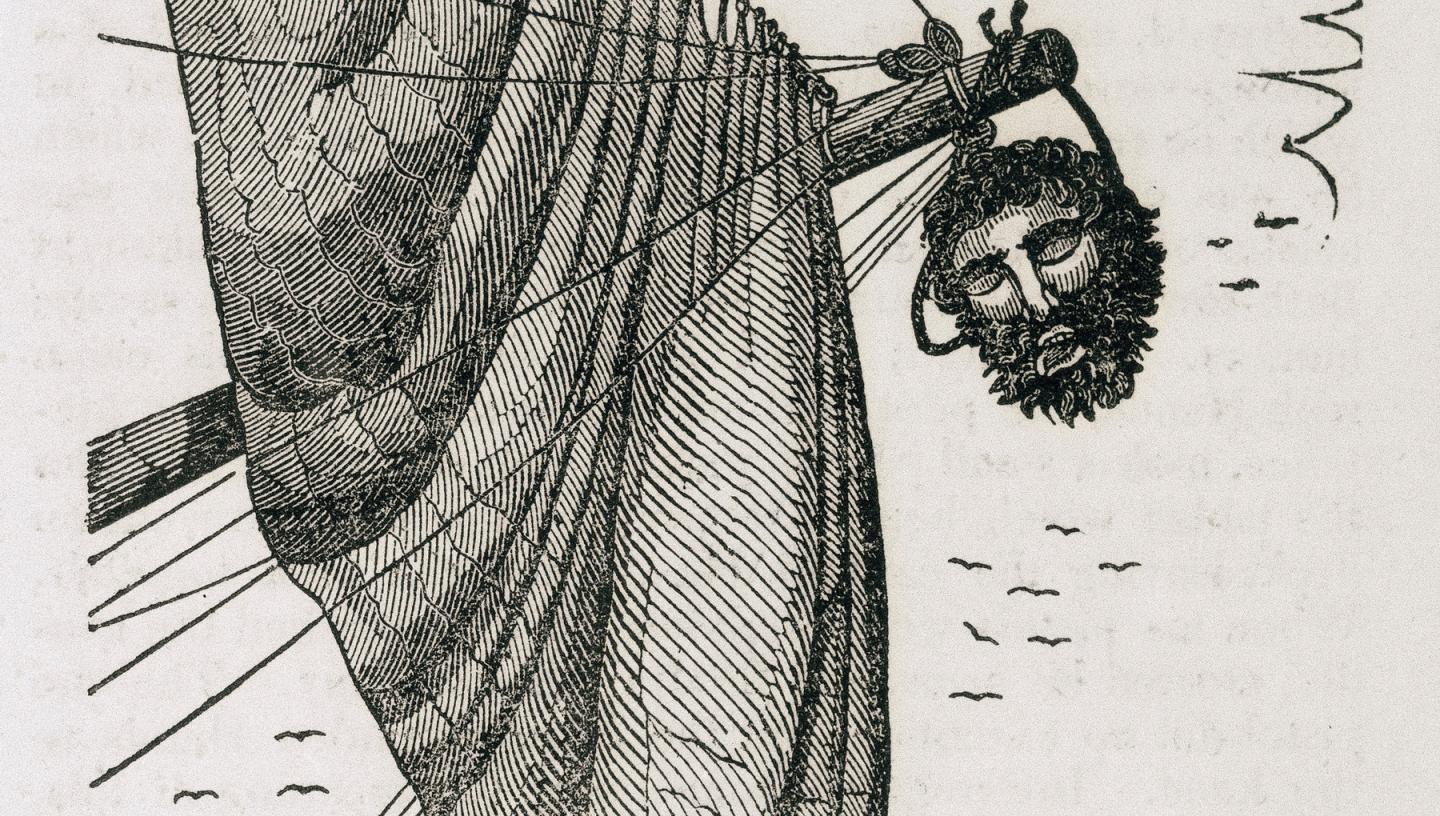
Bringing pirates to justice
Justice, like life, was short, brutal and spectacular for pirates.
Seamen and their families were very aware of the penalty for piracy. The publicity surrounding the trials and executions of pirates made sure of that.
Most trials lasted no more than one or two days, even when 20 or 30 prisoners were involved. This was mainly because there were no arguments in their defence. It was the usual practice for the accused men to conduct their own defence.
Pirate defences
Since most of the men on trial were seamen with little or no education they could not make a good case for themselves. Their response was usually one of the following:
- they said nothing at all in their defence
- they simply said they were drunk at the time
- they claimed they were forced men - their ships had been captured by pirates and they had been compelled to do as they were told
Execution Dock
For more than four centuries pirates were hanged at Execution Dock on the north bank of the Thames. The exact spot is shown on old maps of London and lies a mile downstream from the Tower of London on a bend of the river at Wapping.
A public event
The gallows were built on the shore near the low tide mark. When an execution was due to take place, large crowds gathered on the shore and in boats moored out in the river.
The condemned man had to travel in a procession from the Marshalsea Prison on the south bank, across London Bridge and past the Tower of London to Execution Dock.
After the pirate had been hanged it was usual to let three tides pass over the body before it was taken away to be buried in an unmarked grave or sent to Surgeon's Hall for dissection.
The speeches and confessions of criminals about to be hanged in England and the colonies were usually printed. They sold in large numbers in the days following an execution.
Pirates on display
It was the custom to display the corpses of the more notorious pirates at places along the river. They would be seen by the crews of all ships entering and leaving the port. Normally they would stay there for three tides.
The body of Captain Kidd was left suspended at Tilbury Point on the lower reaches of the Thames. It would have been visible there for an hour or more as the ships navigated Sea Reach. That was the broad stretch of the river that curves around the desolate point.
Preserved with tar
To make sure that the pirates' bodies remained intact for as long as possible, the corpses were coated with tar. The tar may also have stopped birds pecking the flesh. Once coated with tar, the body was fitted into a specially made harness of iron hoops and chains that held the head, body and legs in place. This was known as a gibbet.
On the spot
The Piracy Act of 1698 made it possible for Admirals to conduct trials at sea or anywhere else without having to bring the accused to England. It would lead to the execution of 600 pirates, estimated to be around 10% of those active in the Caribbean at that time. The remains of convicted pirates would soon adorn the harbours of foreign ports as well as swinging in the wind by the Thames.